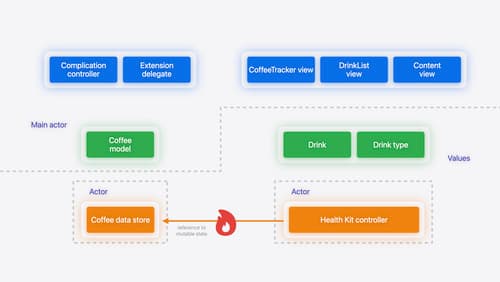When is it appropriate to use Combine versus asynchronous/await?
Asked on 2024-07-30
1 search
When deciding between using Combine and async/await in Swift, it is important to consider the nature of the tasks you are handling and the concurrency model you prefer.
When to Use Combine
- Reactive Programming: Combine is well-suited for reactive programming paradigms where you need to handle streams of values over time, such as user interface events or network responses.
- Complex Data Pipelines: If your application requires complex data transformations, filtering, and combining multiple asynchronous data sources, Combine provides powerful operators to manage these tasks.
- Backwards Compatibility: Combine can be a good choice if you need to maintain compatibility with older codebases that already use completion handlers or other reactive frameworks.
When to Use async/await
- Simpler Syntax: The async/await syntax is more straightforward and easier to read, making it a good choice for simpler asynchronous tasks.
- Task Suspension: Async/await is ideal for tasks that involve waiting for a single asynchronous operation to complete, such as reading from disk or making a network request. The syntax clearly indicates where suspensions can occur, making the code easier to understand and maintain.
- Concurrency Safety: Swift's concurrency model, including async/await, provides strong guarantees about data race safety, especially when combined with actors and structured concurrency. This can simplify the management of concurrent tasks and reduce the risk of concurrency-related bugs.
Examples from WWDC Sessions
- Concurrency in Swift: The session "A Swift Tour: Explore Swift’s features and design" discusses how async/await is used to model task suspension in code, making it easier to handle asynchronous operations (Concurrency).
- Testing with async/await: The session "Go further with Swift Testing" explains how async/await can be used in test code to handle asynchronous conditions, allowing tests to run in parallel and making them more efficient (Asynchronous conditions).
- Migrating to Swift 6: The session "Migrate your app to Swift 6" highlights the benefits of adopting Swift's concurrency features, including async/await, to improve the clarity and safety of concurrency in your applications (Adopting concurrency features).
In summary, use Combine for complex reactive programming needs and async/await for simpler, more readable asynchronous code with strong concurrency safety guarantees.

A Swift Tour: Explore Swift’s features and design
Learn the essential features and design philosophy of the Swift programming language. We’ll explore how to model data, handle errors, use protocols, write concurrent code, and more while building up a Swift package that has a library, an HTTP server, and a command line client. Whether you’re just beginning your Swift journey or have been with us from the start, this talk will help you get the most out of the language.

Go further with Swift Testing
Learn how to write a sweet set of (test) suites using Swift Testing’s baked-in features. Discover how to take the building blocks further and use them to help expand tests to cover more scenarios, organize your tests across different suites, and optimize your tests to run in parallel.

Migrate your app to Swift 6
Experience Swift 6 migration in action as we update an existing sample app. Learn how to migrate incrementally, module by module, and how the compiler helps you identify code that’s at risk of data races. Discover different techniques for ensuring clear isolation boundaries and eliminating concurrent access to shared mutable state.
